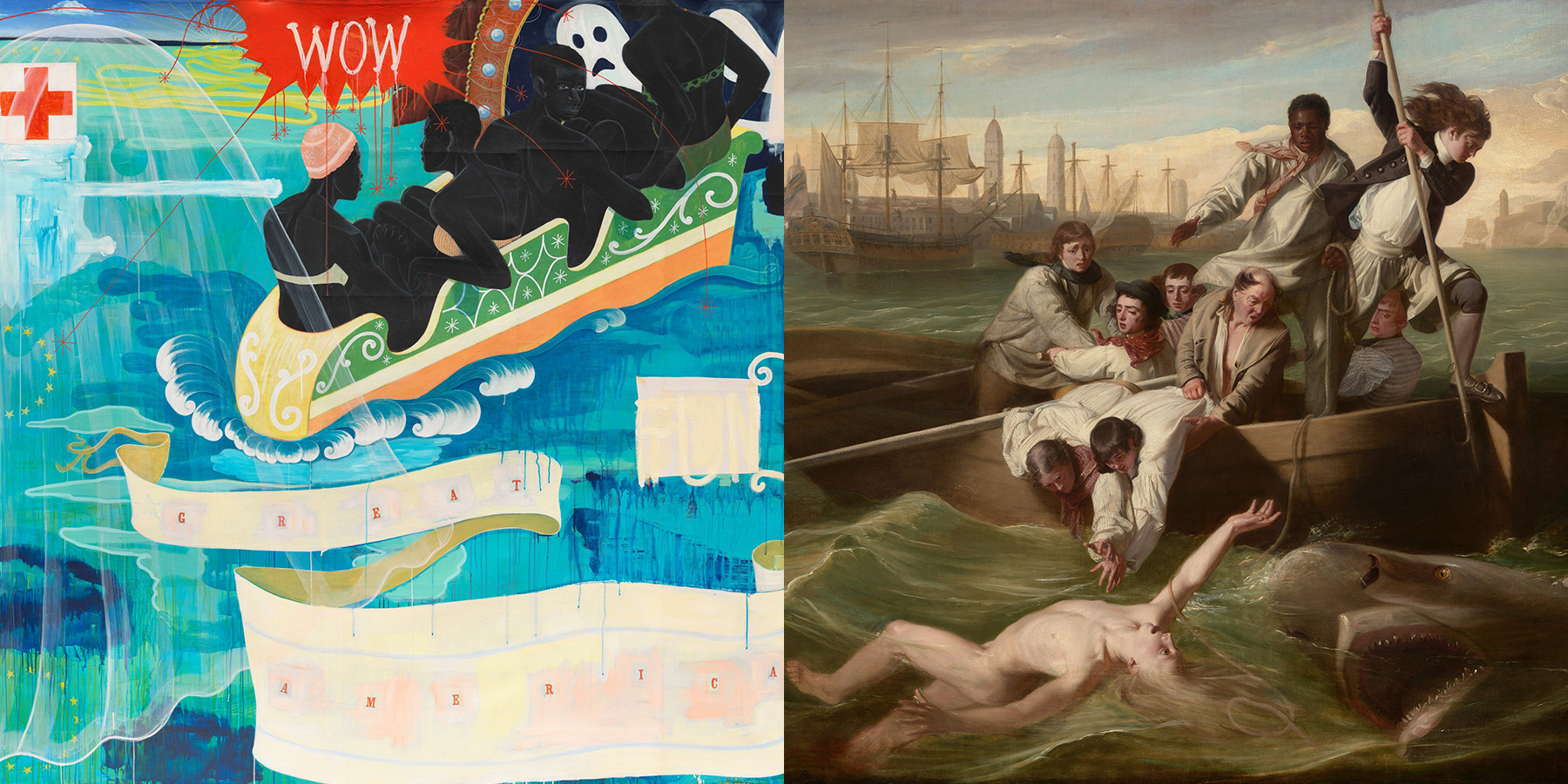Now on View
November 18, 2023 – January 31, 2025
West Building, Main Floor - Gallery 60B
Featured works

Kerry James Marshall, Voyager, 1992, acrylic and collage on canvas, Corcoran Collection (Gift of the Women’s Committee of the Corcoran Gallery of Art), 2014.79.52

John Singleton Copley, Watson and the Shark, 1778, oil on canvas, Ferdinand Lammot Belin Fund, 1963.6.1

Kerry James Marshall, Great America, 1994, acrylic and collage on canvas, Gift of the Collectors Committee, 2011.20.1

Kerry James Marshall, Study for "Great America" (Under Water), c. 1994, pen and blue ink on coated paper, Gift of the Artist, 2014.12.2

Kerry James Marshall, Study for "Great America", c. 1994, pen and black ink on graph paper, Gift of the Artist, 2014.12.1

Kerry James Marshall, Final study for "Great America", c.1994, black conté crayon on wove paper, Gift of the Artist, 2014.12.10
Explore related content
Organization
Organized by the National Gallery of Art, Washington
Passes
Admission is always free and passes are not required
Banner detail: Kerry James Marshall, Great America, 1994, acrylic and collage on canvas, Gift of the Collectors Committee, 2011.20.1; John Singleton Copley, Watson and the Shark, 1778, oil on canvas, Ferdinand Lammot Belin Fund, 1963.6.1
